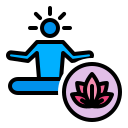On‑the‑Go Calm: Breathing in Busy Moments
Before opening a new tab or app, take three slow exhales through the nose, each longer than the inhale. This micro‑ritual resets attention and curbs stress stacking. Try it today and report when it felt surprisingly helpful.
On‑the‑Go Calm: Breathing in Busy Moments
Match steps to breath: inhale for three steps, exhale for five steps. Adjust as needed. This quiet rhythm calms while commuting or strolling. Share your favorite route and whether birdsong or city hums supported your relaxation.





